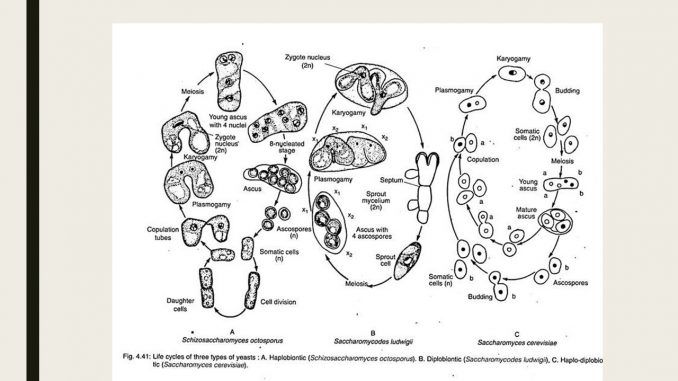
Yeast: morphology and life cycle
- They are single celled fungi
- Size: generally larger than most bacteria; (1-5) um wide and (5-30)um length
- Shape: cell is egg shaped, some are elongated or spherical
- Size and shape varies among species
- Yeast cell lacks flagella and other organ of locomotion.
Morphology of yeast cell
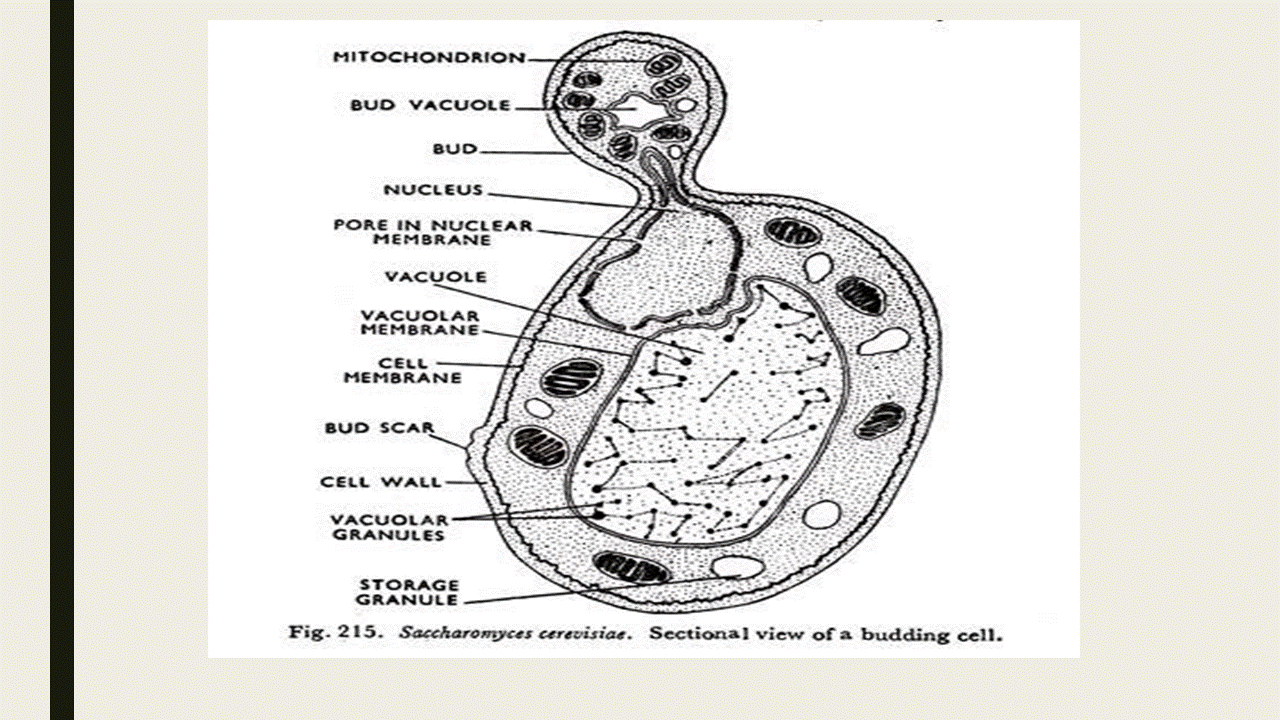
- Cell wall: composed of thin chitinous cell wall
- The protoplasm is surrounded by cell membrane which contains all the usual cell organelles like ribosomes, mitochondria, ER, nucleus and other granules
- Vacuole is single, large and centrally located.
Reproduction in yeast cell
- Yeasts generally reproduce by Asexual method such as Budding or fission,
- Yeasts lacks sex organs ( anthridium and oogonium)
- Sexual reproduction in yeast is highly variable
1. Budding
- It Occurs during abundant supply of nutrition
- Parent nucleus divides and moves toward daughter cell
- Enzymatic activities increases,
- Increased turger pressure acts on weaker part of cell wall and bud erupts
- Septum formation and bud separates into individual cell
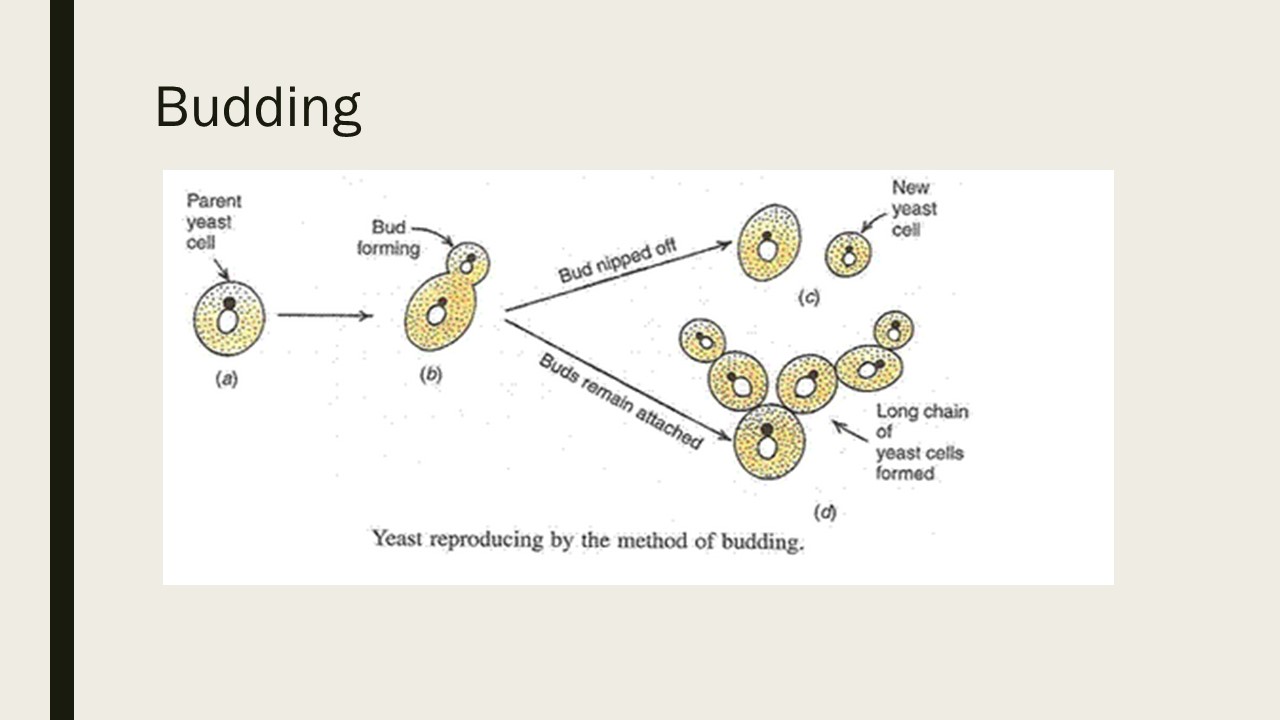
2. Sexual reproduction
- Sexual reproduction is highly variable in yeasts
- Three different pattern of life cycle found in different genus
i. Haplodiplobiontic life cycle
ii. Haplobiontic life cycle
iii. Diplobiontic life cycle
life cycle of Saccharomyces cerevisiae: Haplodiplobiontic life cycle
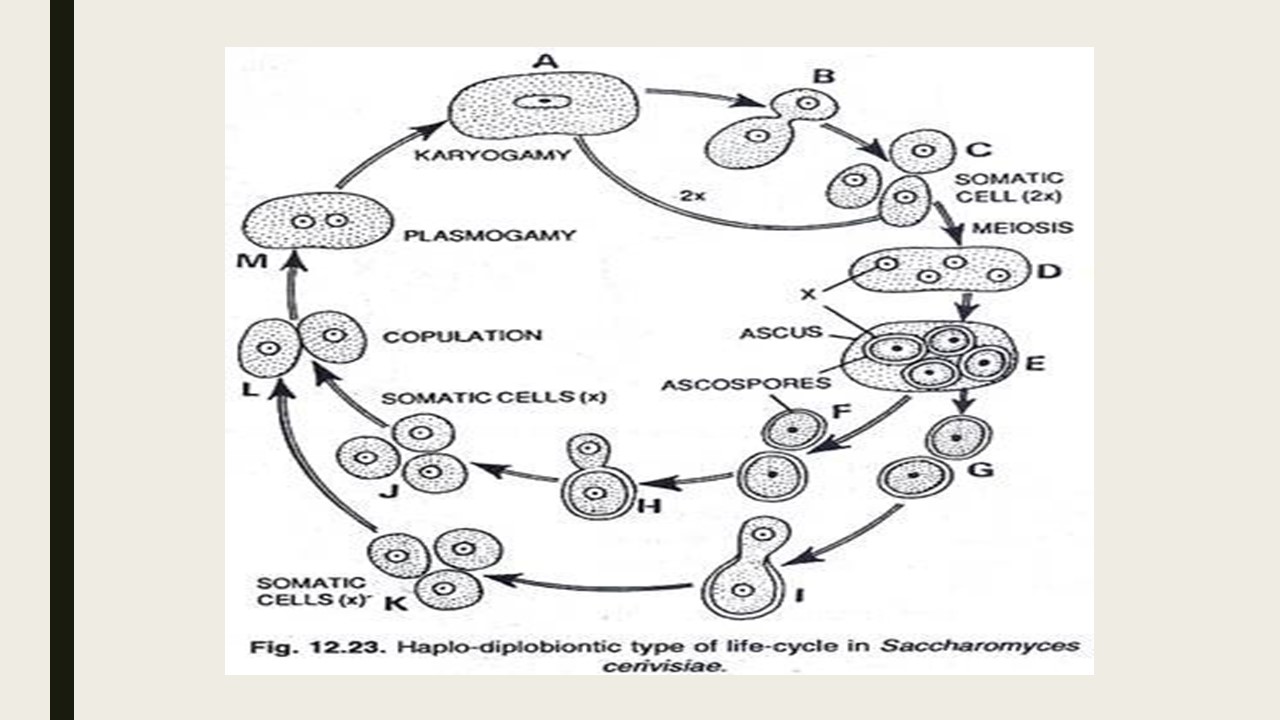
- This cycle occurs in Saccharomyces cerevisiae
- In this life cycle somatic cell of yeast exists in two form ( Haploid dwarf cell and Diploid large cell)
- Haploid cell contains two mating types “a” and “α”
- During favorable condition each of the haploid cell multiply by budding only
- If these mating types comes in contact with each other, they form gametangia and starts sexual reproduction
- Fusion of these two haploid cell form large fusion cell called Plasmogamy
- Nucleus also fused by karyogamy to form zygote
- Zygote multiply by budding and forms several diploid cells
- these diploid cells are larger than haploid cells
- Like haploid cell, these large diploid cells also live independent life and reproduce by budding
- Under unfavourable condition, diploid large cell become spherical and directly behaves as ascus mother cell
- Nucleus of ascus mother cell divides by meiosis to form 4- haploid nuclei
- Out of 4-nuclei, 2 belongs to mating type “a” and t2 belongs to “α”
- Each nuclei gather some cytoplasm and becomes ascospore
- Each ascospore is globular and thick walled structure and relased by rapture of ascus wall.
- Ascospore germinates to give haploid dwarf cell.
life cycle of Schizosaccharomyces: Haplobiontic life cycle
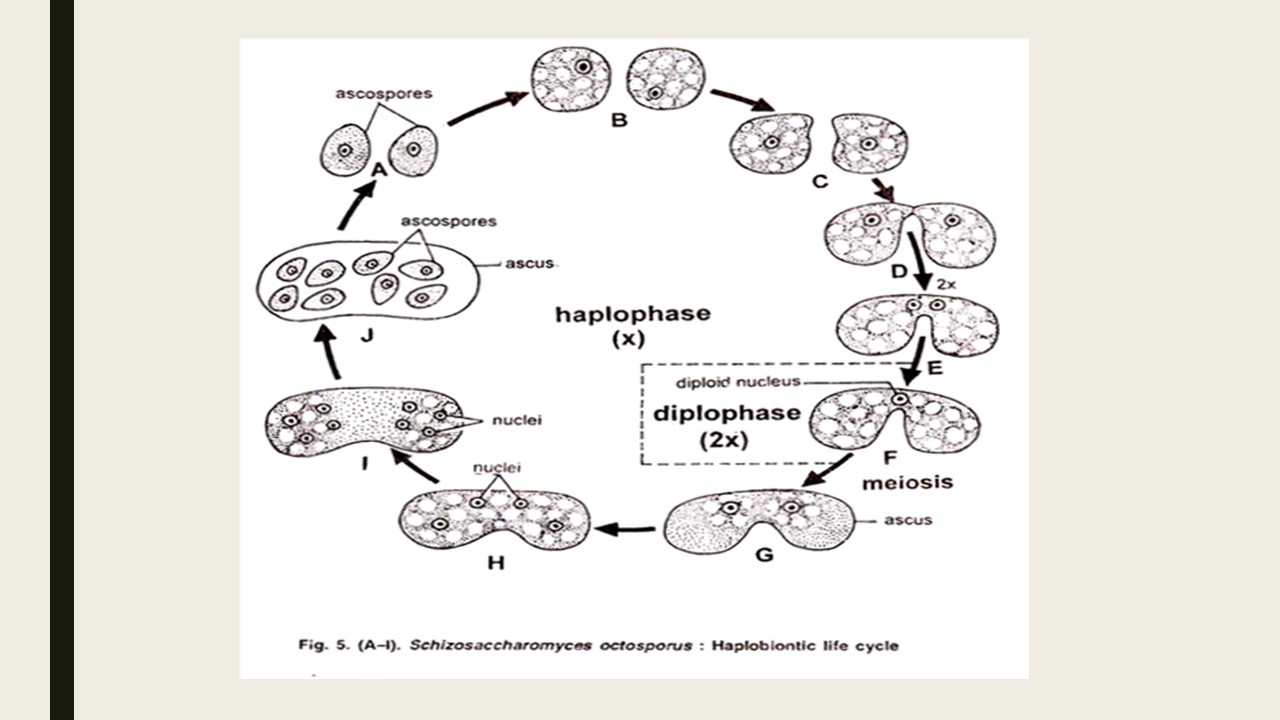
- This life cycle occur in Schizosaccharomyces.
- In haplobiontic cycle, somatic haploid cell multiply by fission producing number of haploid cell.
- During sexual reproduction, two sister haploid cell behaves as gamatangia and produce beak like structure
- The beaks of two gamatangia fused and wall at the point of contac dissolve to form canal called conjugation tube.
- Nucleus of two cell moves and fused to form diploid zygote
- The zygote directly function as ascus mother cell
- Nucleus of ascus mother cell divides by meiosis forming 4-haploid nuclei which themselves divides by mitosis to form 8- haploid cells
- Each 8- nuclei gather some cytoplasm and become ascospore
- Ascospore released by rapture of ascus
- Ascospore germinates to give haploid cell and continue life cycle
Life cycle of Saccharomyces ludwigii: Diplobiontic life cycle
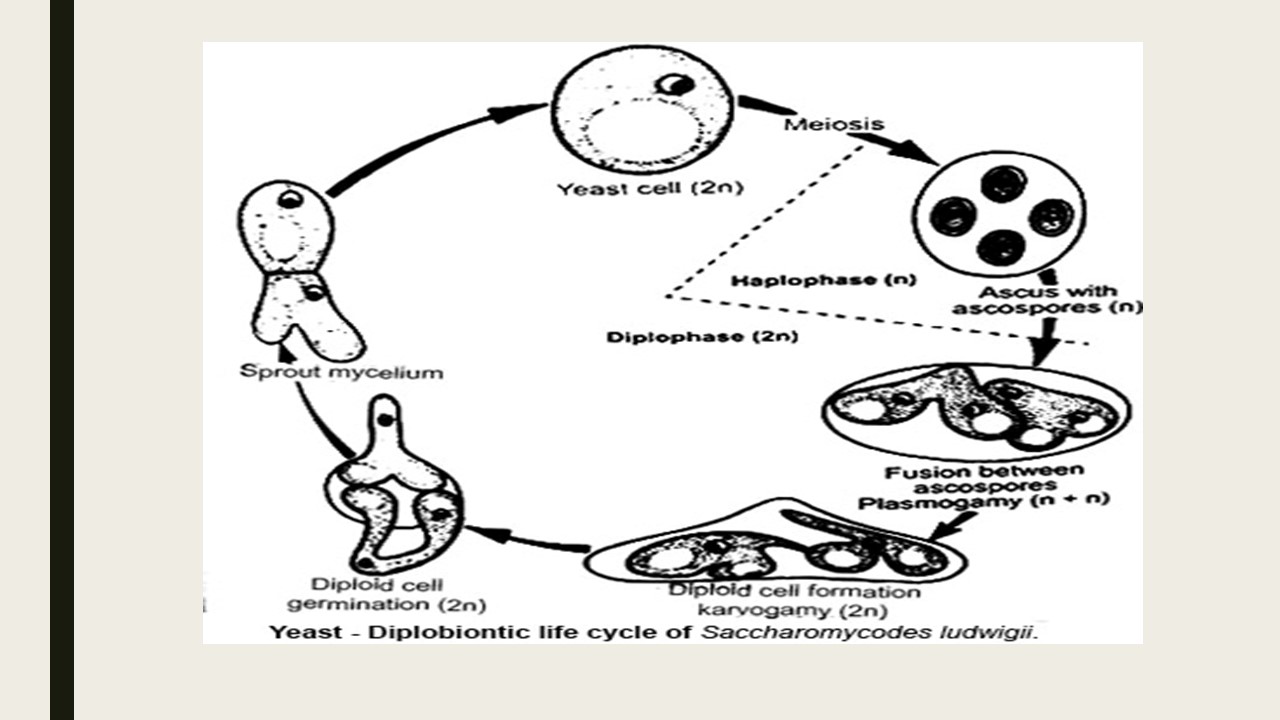
- This life cycle is found in Saccharomyces ludwigii
- In diplobiontic life cyle, diploid somatic cell multiply by budding and fission
- Under certain condition, these somatic cell directly functions as ascus mother cell and nucleus of ascus mother cell divides by meiosis to form 4-haploid nuclei
- These haploid nulceii gather cytoplasm and transform into ascospore4 ascospore,
- Out of 4-ascospore, 2 are mating type “A1” and 2 mating type “A2”
- These two mating ascospore fused within ascus to form diploid zygote.
- The diploid zygote gerinates within ascus producing a germ tube
- The germ tube breaks the ascus wall and function as diploid sprout mycelium.
- The sprout mycelium on budding gives sprout diploid cell which give diploid somatic cells.
